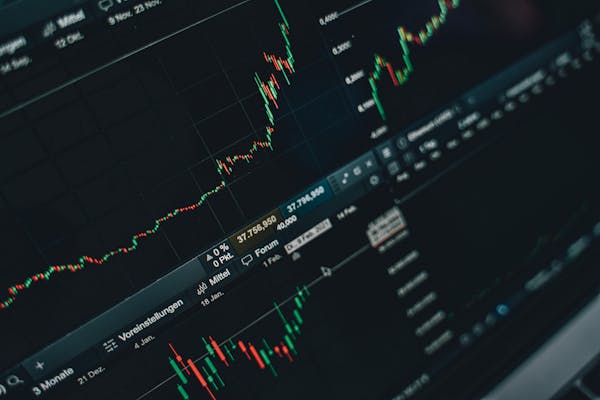Understanding Agricultural ETFs: A Comprehensive Guide
Agricultural exchange-traded funds (ETFs) serve as a strategic gateway to the dynamic realm of the agricultural sector. These investment vehicles meticulously track the performance of agricultural commodities, agribusiness companies, and market indexes, offering investors a diversified and accessible portfolio within the agricultural landscape. Rather than navigating the complexities of individual commodities or stocks, investing in agricultural ETFs provides a simplified approach with shares traded similarly to stocks.
Key Takeaways:
Agricultural ETFs provide exposure to the agricultural sector's long-term growth potential.
Two main types of agricultural ETFs exist: agribusiness ETFs and sector-specific commodity ETFs.
Considerations when investing in agricultural ETFs include expense ratios, liquidity, underlying assets, and performance history.
Top agricultural ETFs include Invesco DB Agriculture Fund (DBA), VanEck Vectors Agribusiness ETF (MOO), and iShares MSCI Global Agriculture Producers ETF (VEGI).
Understanding Agricultural ETFs:
Agricultural ETFs operate by pooling investor capital to acquire a range of assets associated with farming and agriculture. These funds meticulously track the price movements of these assets, providing investors with a straightforward way to engage with the agricultural market. Whether investing in agribusiness stocks or agricultural commodities, these ETFs offer diversified exposure to the sector's performance.
Agribusiness ETFs:
Focused on agribusiness companies listed on stock exchanges, these ETFs cover the entire agriculture supply chain. Investors gain exposure to various facets, including production, processing, distribution, and retail. Noteworthy agribusiness ETFs include VanEck Agribusiness ETF (MOO), iShares MSCI Agriculture Producers ETF (VEGI), and First Trust Indxx Global Agriculture ETF (FTAG).
Risks and Benefits of Agribusiness ETFs:
While agribusiness ETFs offer stability through diversification, they are not without risks, including market volatility and company-specific challenges. Suited for those seeking growth potential within the agricultural sector while leveraging established companies.
Agricultural Commodity ETFs:
These ETFs focus on agricultural commodities, utilizing derivatives contracts to gain exposure to physical goods like corn, soybeans, wheat, and cattle. Notable examples include Invesco DB Agriculture Fund (DBA), Teucrium Wheat Fund (WEAT), and Teucrium Soybean Fund (SOYB).
Risks and Benefits of Agricultural Commodity ETFs:
Direct exposure to commodity markets makes agricultural commodity ETFs attractive for those seeking a hedge against inflation and portfolio diversification. However, the inherent volatility of commodity prices and the complexities of derivatives trading pose additional risks.
Factors to Consider When Investing:
- Commodity Exposure: Evaluate whether the focus is on agribusiness stocks or direct exposure to agricultural commodities.
- Global Diversification: Consider ETFs with exposure across various geographies to mitigate risks associated with local factors.
- Supply Chain Positioning: Assess the ETF's focus on upstream producers or downstream processors and distributors for risk management.
- Dividend Potential: Recognize that agribusiness ETFs may offer dividends, while commodity ETFs typically do not focus on income generation.
- Environmental, Social, and Governance (ESG) Criteria: Factor in sustainable farming practices and other ESG considerations.
- Costs and Liquidity: Compare expense ratios and assess liquidity for easy purchases and sales.
Tax Considerations:
Investors should be aware of potential tax implications, especially for commodity exchange-traded products structured as limited partnerships. Some commodity ETFs may generate unrelated business taxable income or be subject to specific tax rates.
Comparing Investments in Agriculture:
A comprehensive comparison of individual agricultural stocks, agribusiness ETFs, and agricultural commodity ETFs helps investors align their choices with financial goals, risk tolerance, and market conditions.
Is Agriculture a Good Long-Term Investment?
The historical performance of agriculture ETFs depends on factors such as the time frame and the specific type of ETF. The agriculture sector's connection to global demand, technological advancements, and the essential nature of food products can drive long-term growth. However, it is crucial to consider the volatility influenced by weather patterns, geopolitical events, and market dynamics.
Is Agriculture a Good Inflation Hedge?
Agriculture is often considered an effective hedge against inflation due to tangible assets' involvement. The steady demand for agricultural products during inflationary periods, coupled with supply constraints, can contribute to higher commodity prices. Research suggests that agricultural products historically exhibit a strong correlation with inflation.
The Bottom Line:
Investing in Agricultural ETFs presents a balanced blend of risk and potential reward, offering investors an avenue to participate in the vital growth of the agricultural sector. Agribusiness ETFs provide exposure to established companies, while commodity ETFs offer a more direct link to the commodities market. Understanding the nuances, conducting thorough due diligence, and staying informed about global market influences are critical for making well-informed investment decisions in the dynamic field of agriculture.



Comments
Post a Comment